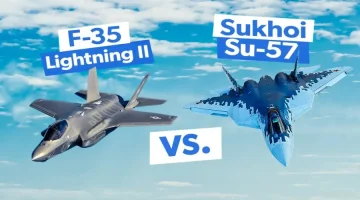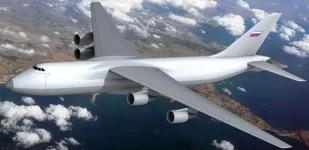- Views: 2K
- Replies: 10
India is strategically positioned to accelerate its development of a 6th-generation fighter jet by building upon the technological advancements achieved through its Advanced Medium Combat Aircraft (AMCA) program.
Experts suggest that transferring and evolving key technologies from the AMCA could significantly reduce development time and costs, allowing India to join the elite group of nations fielding these cutting-edge aircraft.
The AMCA, a 5th-generation multirole fighter under development by India's Aeronautical Development Agency (ADA) and Hindustan Aeronautics Limited (HAL), has already laid a strong foundation in advanced aviation technologies.
As the global aerospace industry increasingly focuses on 6th-generation capabilities, India can capitalize on its existing progress by migrating critical AMCA technologies to its future fighter program.
One of the key areas for technology transfer is in stealth capabilities. The AMCA's design incorporates features like Radar Absorbent Materials (RAM), internal weapons bays, and a low radar cross-section (RCS) design.
These features can be further enhanced for a 6th-generation platform with active cloaking systems, dynamic skin that adjusts RCS, and advanced multispectral camouflage for infrared and radar invisibility.
Similarly, the AMCA's sensor suite, which includes an Active Electronically Scanned Array (AESA) radar, Infrared Search and Track (IRST), and multi-sensor data fusion, provides a solid basis for future development.
The 6th-generation adaptation could incorporate Distributed Aperture Systems (DAS) offering 360-degree situational awareness, a feature currently being explored by the US Air Force's Next Generation Air Dominance (NGAD) program.
Furthermore, quantum-based sensors could enable precise detection and targeting at extreme ranges, exceeding the capabilities of current radar systems.
Propulsion is another area ripe for advancement. The AMCA MkII is expected to be powered by a high-thrust, low-bypass turbofan engine enabling supercruise capability (sustained supersonic flight without using afterburners).
This could be evolved into an engine incorporating adaptive-cycle technology, offering improved fuel efficiency, increased thrust, and better thermal management.
These advancements are crucial for supporting the power requirements of Directed Energy Weapons (DEWs), which are anticipated to be a hallmark of 6th-generation aircraft.
Furthermore, the AMCA program's initial exploration of Artificial Intelligence (AI)-assisted pilot support systems for enhanced situational awareness can be significantly expanded.
A 6th-generation fighter could leverage AI for autonomous mission planning, manned-unmanned teaming, and controlling swarms of accompanying drones.
The concept of loyal wingman drones, such as the Boeing Airpower Teaming System being developed in Australia, is gaining traction globally and could be integrated into India's future fighter strategy.
The initial research for DEW in AMCA can be scaled to include more powerful and varied applications. This involves not only the weapon systems but also the integration with the aircraft’s power management.
According to open-source publications, directed energy weapons offer the potential for near-instantaneous target engagement and reduced collateral damage, making them highly desirable for future air combat scenarios.
By strategically transferring and adapting these key technologies, India's journey from the AMCA to a 6th-generation fighter jet could be significantly expedited. This approach not only conserves resources but also builds upon the successes and lessons learned from the AMCA program.
By focusing on these areas, leveraging existing research, and fostering innovation, India can position itself as a leader in next-generation combat aviation, ensuring both technological advancement and strategic autonomy in an increasingly complex geopolitical landscape.


